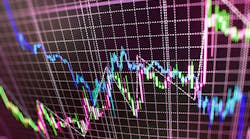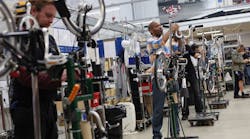Latest from Industry Trends
A U.S. Recession Is Hard to Find in the Data
The recent carnage in financial markets has prompted much speculation about whether the U.S. economy is headed into a recession. If so, it certainly isn't acting that way.
Forecasters have a notoriously bad record of calling recessions. Back in October 2008, for example, many economists still expected the U.S. to avoid the brutal contraction that, we now know, had actually begun 10 months earlier.
Nonetheless, with due humility, it's worth trying to gain some insight by comparing what's happening now to what has happened at the beginning of other recessions. To that end, consider six indicators that cover at least some of the period since the stock market plummeted in early January: consumer spending, job openings, new unemployment claims, new manufacturing orders, orders for capital goods and building permits.
In the first three months of the last five recessions, on average, all these indicators pointed toward trouble. By contrast, during the three months through January (and through most of February for unemployment claims), they look largely positive. The number of people filing for jobless benefits is up a bit, but not much. Capital goods orders could be better, but they're not falling in inflation-adjusted terms. The stock market is the only indicator that is decidedly pointing down. Here's how that looks:
To be sure, we'll learn more when the jobs report for February comes out Friday. And the world still offers plenty of threats, such as Europe's persistent economic malaise, potential shock waves from a slowdown in China and deepening distress in emerging markets more broadly. For now, though, the available evidence suggests that the U.S. economy is on the same, slow growth trajectory it has followed for the past several years.
This column does not necessarily reflect the opinion of the editorial board or Bloomberg LP and its owners.











